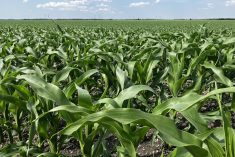CHICAGO (Reuters) — Exports of U.S. agricultural products such as wheat, rice, soybeans and meat products stand to gain from a surprise U.S. move toward repairing relations with Cuba, agriculture industry officials said on Wednesday.
U.S. Department of Agriculture Secretary Tom Vilsack called the move an “important opportunity” that will make exports of U.S. farm goods cheaper, easier and less time-consuming for shippers.
President Barack Obama announced on Wednesday that the United States would restore diplomatic relations with Cuba more than 50 years after they were severed.
Read Also

Canada lifts several import tariffs on U.S. goods as talks continue
Starting September 1, Canada will adjust its tariffs on agricultural products, consumer goods and machinery, Prime Minister Mark Carney announced at a press conference in Ottawa on Friday.
U.S. law exempted food from a decades-old embargo on U.S. trade with the Cuba, but cumbersome rules on how transactions were executed made deals difficult and costly. The U.S. policy shift should eliminate these hurdles.
“The policy change is that now payment can be made while goods are in transit, which is the normal course of business, and no longer does the money need to be routed through a third party,” Vilsack told reporters on the sidelines of a U.S.-China trade meeting.
Cuba imported nearly US$350 million of U.S. agricultural products in 2013, including $146 million of poultry meat, $108 million of soy products, and $82 million of corn and feeds, according to U.S. Department of Agriculture data.
Easing of financing restrictions opens up the market, just 145 kilometres from the world’s largest agricultural exporter, to other products.
“Wheat hasn’t traded there, rice hasn’t either. Those are two new opportunities. With the enhanced tourism, the increased incomes could benefit higher-value products like beef and pork,” said Devry Boughner Vorwerk, a Cargill vice-president and chair of the U.S. Agriculture Coalition for Cuba.
Cuba’s purchases of U.S. wheat and rice have been restricted by the higher cost of financing transactions compared with shipments from South America and Asia.
“Cuba has not imported any U.S. wheat for five years. Opening trade has the potential to put that market back in our column as they like our wheat and it is loaded only a short sail from Cuba,” said Steve Mercer, spokesman for the U.S. Wheat Associates.
The trade group said Cuba could import at least 500,000 tonnes of U.S. wheat a year if trade were easier.
“We believe our market share there could grow from its current level of zero to around 80-90 percent,” Alan Tracy, president of the U.S. Wheat Associates, said in a statement.
Cuba would likely buy mostly hard red winter wheat, a bread-making variety grown mainly in the U.S. Plains states, as well as pasta-making durum and soft red winter wheat, used in pastries.
Cuba’s milled rice purchases could approach 700,000 tonnes a year, according to one rice exporter, making it one of the region’s top markets for U.S. rice.
















